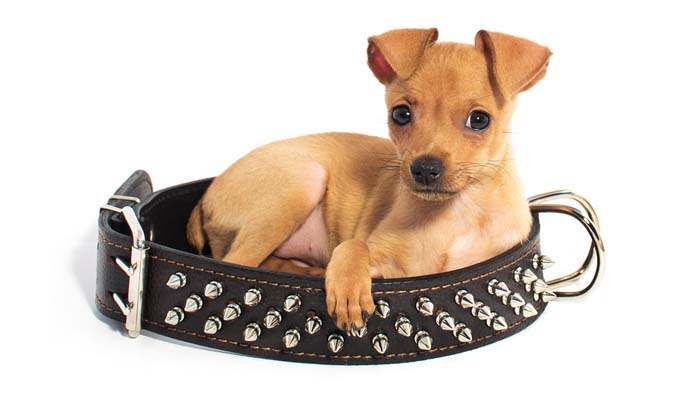Choosing the right dog collar can be surprisingly complex. With options ranging from simple flat collars to advanced smart collars, finding the perfect fit for your pet’s needs and personality matters. Whether you’re out for an everyday walk or keeping tabs on a playful pup, the collar you choose plays a crucial role in your dog’s safety and comfort. This guide aims to simplify that choice.
We’ll cover various types of collars, from practical to high-tech, helping you find the Best designer dog collars.
Why Invest in a Designer Dog Collar?
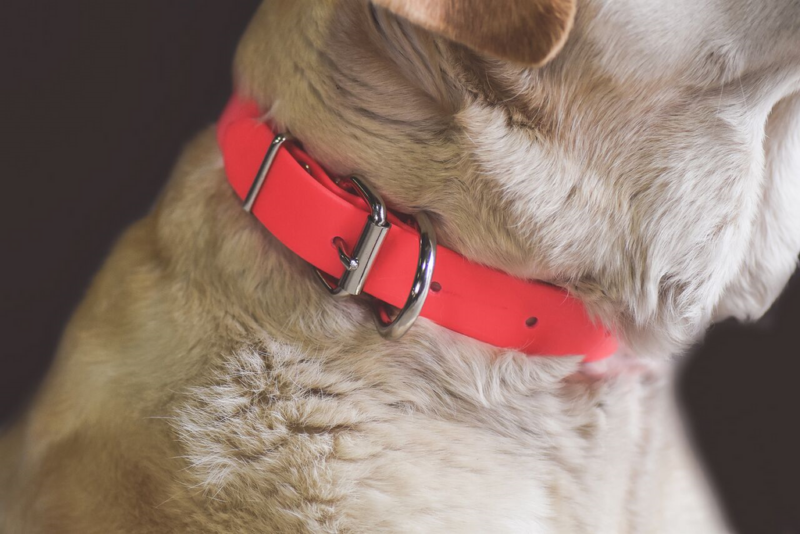
Designer dog collars offer more than just a luxury tag; they embody quality, durability, and unique designs that reflect your pet’s personality. Beyond aesthetics, these collars come with superior craftsmanship that ensures your pet’s comfort and safety.
Different Types of Dog Collars
1. Standard Flat Collar
The Standard Flat Collar is a ubiquitous choice among dog owners, renowned for its simplicity and effectiveness. Crafted from durable materials such as leather or nylon, this collar features either a buckle or a quick-release clasp that ensures a secure fit. Its design allows it to rest comfortably around the dog’s neck, making it an ideal option for everyday use.
Perfect for daily walks and basic training sessions, the Standard Flat Collar is most suitable for dogs that do not have a tendency to pull excessively, ensuring both comfort and control during your daily routines.
2. Martingale Collars
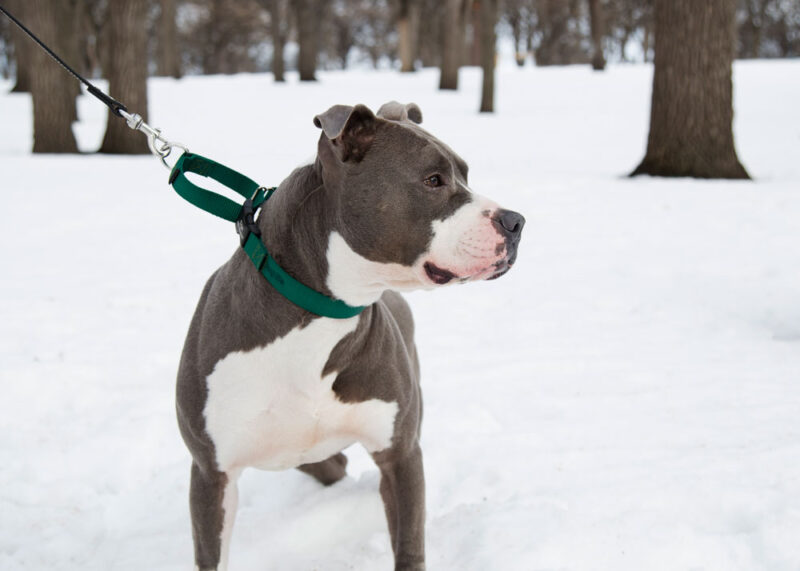
These offer a unique solution for dogs that might otherwise slip out of a traditional collar. This type of collar is designed with two loops; the larger loop wraps around the dog’s neck, while the leash attaches to the smaller loop.
When the dog pulls, the collar tightens slightly but is engineered not to constrict fully around the neck, thus preventing the dog from escaping while avoiding discomfort. Particularly effective for breeds with narrower heads, such as Greyhounds, the Martingale Collar ensures security and comfort without the risk of the collar slipping off during walks or training.
3. Harnesses
Although not technically a collar, these provide a distinct approach to managing your dog. They wrap around the dog’s body and chest, significantly reducing strain on the neck by distributing pressure more evenly.
This makes harnesses an excellent choice for dogs prone to pulling, smaller breeds, and those with respiratory issues. By attaching the leash to a clip on the back or the chest, owners gain better control over their pets, making harnesses a fantastic tool for training puppies and managing active dogs during walks.
4. Head Halter
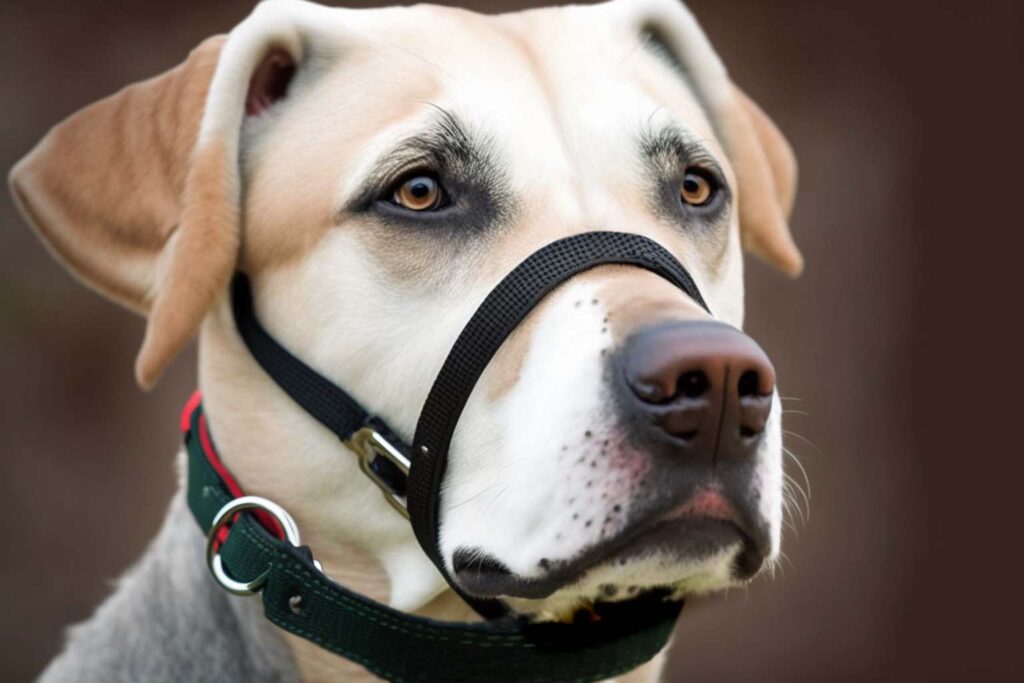
The Head Halter is designed to guide a dog’s head, similar to the functionality of a horse halter. By fitting around the dog’s nose and back of the head, it grants the owner control over the direction the dog moves, facilitating easier steering.
This type of collar is especially useful for dogs that are strong pullers or require training to improve their leash behavior. With the Head Halter, owners can gently guide their dogs, making walks and training sessions more manageable and enjoyable for both.
5. Slip Collars
These are also known as Choke Chains, and they are primarily used for training purposes to correct behavior. Constructed from a metal chain, the collar tightens around the dog’s neck when pulled, providing a correctional stimulus.
However, it’s crucial to use Slip Collars with caution and under the guidance of a professional trainer to avoid the risk of injury. They are not recommended for unsupervised use and should be employed as a training tool to address specific behavioral issues, ensuring safe and effective training sessions.
6. Prong or Pinch Collars
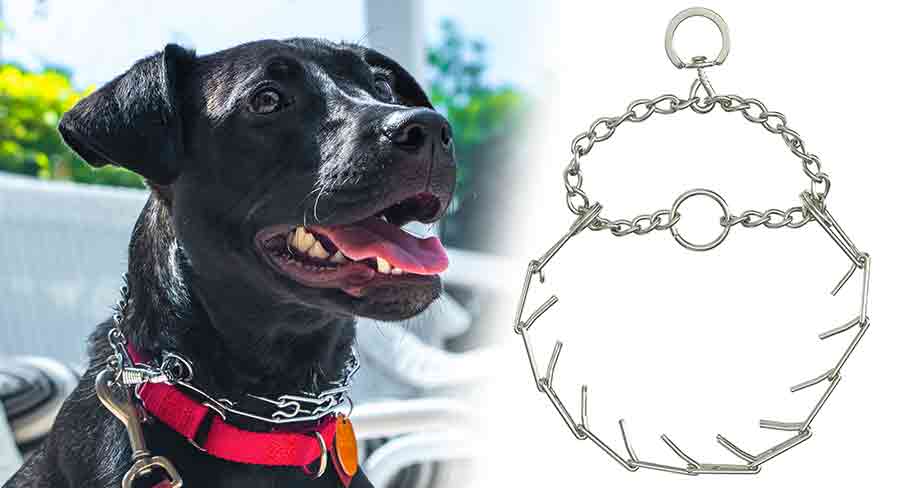
Prong or Pinch Collars are designed with metal links that have blunted open ends facing the dog’s neck. When tension is applied, such as when the dog pulls, the collar evenly distributes pressure around the neck, simulating the corrective behavior a mother dog might use.
This collar is best suited for strong, stubborn dogs with specific behavioral challenges and should only be used under the direct supervision of a trained professional to ensure it is a safe and effective training aid.
7. Breakaway Collars
These are engineered with a safety mechanism that allows the collar to unsnap automatically if it gets caught, preventing the risk of choking. This feature makes it an excellent choice for dogs that are left unsupervised in a fenced yard or during play with other dogs.
Resembling a standard flat collar in appearance, the Breakaway Collar provides peace of mind to owners by ensuring the safety of their pets in potentially hazardous situations.
8. Smart Collars
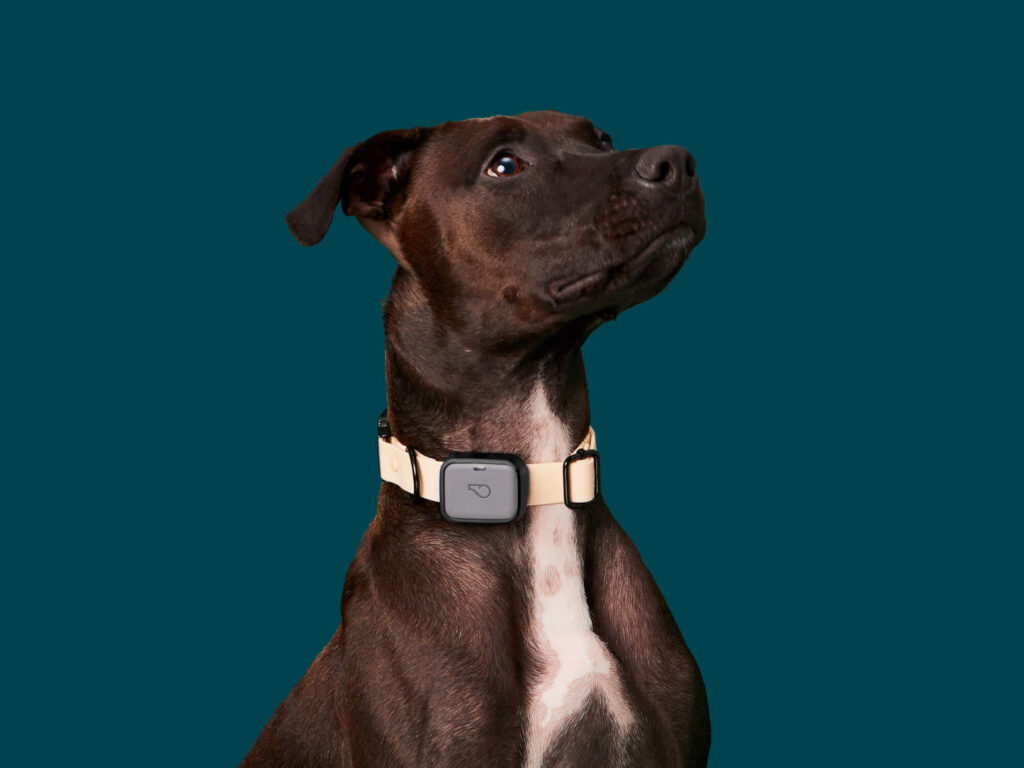
Smart Collars represent the cutting edge of pet technology, offering features such as GPS tracking, activity monitoring, and bark-limiting capabilities. Many models connect to mobile apps, allowing owners to monitor their pet’s location, activity levels, and even health metrics in real-time.
This type of collar is ideal for pet owners who are tech-savvy and wish to keep a close eye on their furry friends, whether for safety, fitness, or behavioral monitoring.
9. Reflective or Lighted Collars
These are specifically designed to increase a dog’s visibility during low-light conditions. Whether made from reflective materials or equipped with built-in lights, these collars ensure that dogs are visible to their owners, other people, and vehicles during nighttime walks.
This added visibility is crucial for preventing accidents and ensuring the safety of both pets and their owners, making Reflective or Lighted Collars a must-have for those who frequently walk their dogs in the evening or early morning hours.
How to Choose
Understand Your Dog’s Needs

- Ensure the collar fits your dog comfortably by measuring your dog’s neck before purchasing.
- Leather, nylon, and eco-friendly materials offer different benefits in terms of durability, comfort, and style.
- Consider your dog’s lifestyle. Active dogs may need more durable, waterproof collars.
Determine His Style and Personality
From minimalist to extravagant, choose a collar that reflects your dog’s personality. Select a color that complements your dog’s fur and your personal style. Personalized collars with your dog’s name or charms add a unique touch.
Conclusion
Selecting the right designer dog collar for your pet in 2024 is about combining style with practicality. It’s an opportunity to showcase your pet’s unique personality while ensuring their comfort and safety. With the tips and insights provided, you’re well-equipped to make an informed choice that will turn heads and add a touch of glamour to your pet’s everyday life.

